Archive for the ‘Charlotte Mason’ Category
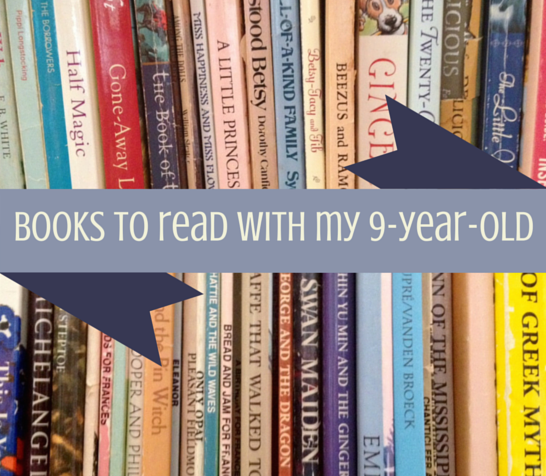
These are the books I’ve collected in one place for Rilla to pull from this year. They may be read-alouds or read-alones, depending on what we’re in the mood for. I expect Huck will listen in on a lot of the read-alouds. (And probably the older kids too, sometimes, because we’re like that.)
No particular order here. This is how they landed on the shelf. Will we read them ALL? It’s a long list! Most likely we won’t, but the idea is to pull together a rich selection of books to choose from. The history, science, mythology, and poetry selections (second half of list) form a kind of homeschooling core library, and the fiction and picture book choices (up top) will provide read-aloud and solo reading options for months to come. I’ve listed those first because they’re what we’ll lead off with most mornings, to make sure life doesn’t crowd out the very best part of the day.
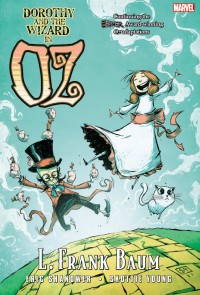 I’m quite sure other titles will join the list as we go. I can already think of a few I’ve left off, but which she may be ready for by the end of the year. (It doesn’t help that Jane keeps thrusting more books at me. “I loved this one at her age!” She’s my daughter, all right.) 😉
I’m quite sure other titles will join the list as we go. I can already think of a few I’ve left off, but which she may be ready for by the end of the year. (It doesn’t help that Jane keeps thrusting more books at me. “I loved this one at her age!” She’s my daughter, all right.) 😉
Naturally I expect Rilla will spend a lot of time revisiting some of her own favorites, especially the Oz graphic novel adaptations by Eric Shanower and Skottie Young and other comics.
Also!! We have Swallows and Amazons, Ballet Shoes, and Dancing Shoes on audio to listen to during our Saturday night art-and-audiobook sessions, now that we have made our way through most of Roald Dahl. (This, by the way, is the only reason Ransome, Streatfield, and Dahl aren’t on the list below. I imagine Rilla will return to Matilda, James, the BFG, and Charlie at some point during the year—they were great favorites.)
I suppose I should also mention that Scott is currently reading her my Charlotte series at bedtime. He reads all my novels to the kids. I can’t do it because I always want to tweak the writing. 🙂
For a look at what besides books will fill Rilla’s days, see “High Tide for Huck and Rilla.”

*An asterisk means the book has one or more sequels which may be added to this list
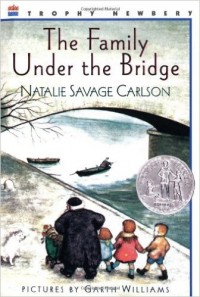
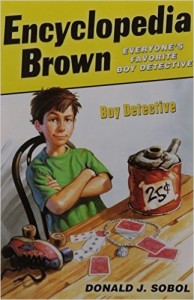


The Family Under the Bridge, Natalie Savage Carlson
Encyclopedia Brown, Donald Sobol*
The Rescuers, Margery Sharp
Turtle in Paradise, Jennifer Holm
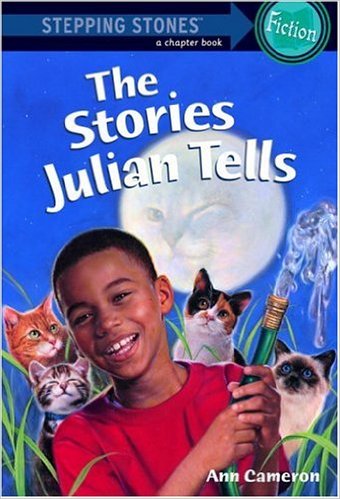
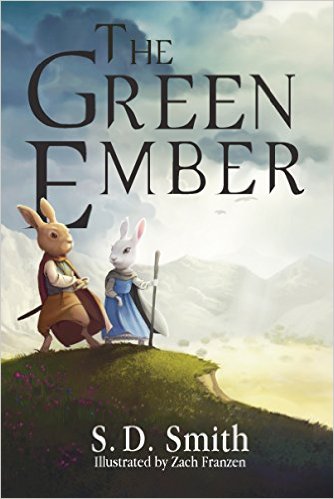
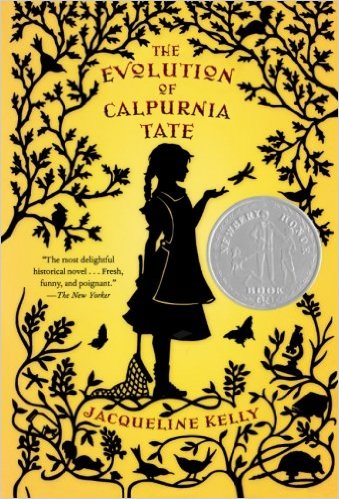
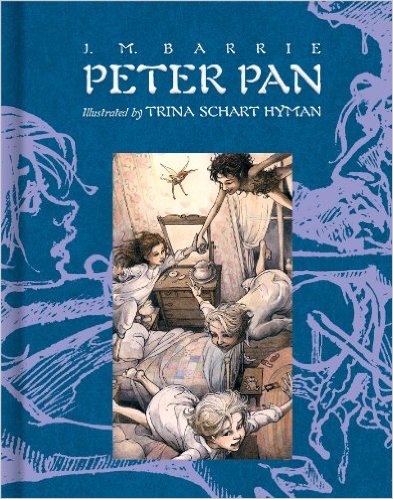
The Stories Julian Tells, Ann Cameron*
The Green Ember, S. D. Smith
The Evolution of Calpurnia Tate, Jacqueline Kelly*
Peter Pan, J.M. Barrie
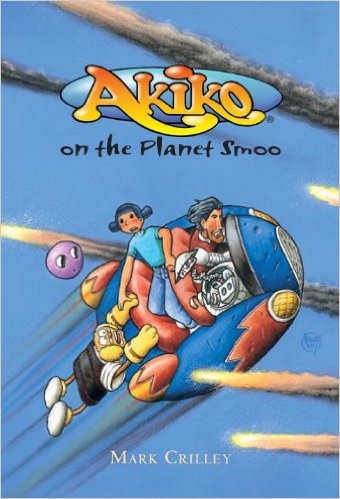

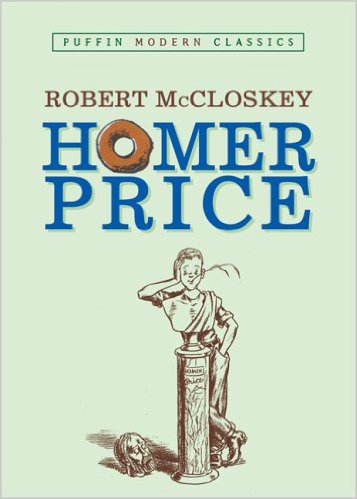
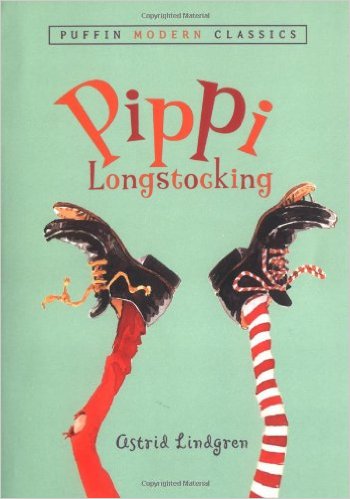
Akiko on the Planet Smoo, Mark Crilley*
The Book of Three, Lloyd Alexander*
Homer Price, Robert McCloskey
Pippi Longstocking, Astrid Lindgren*
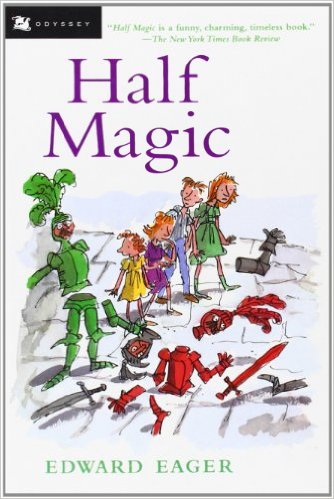
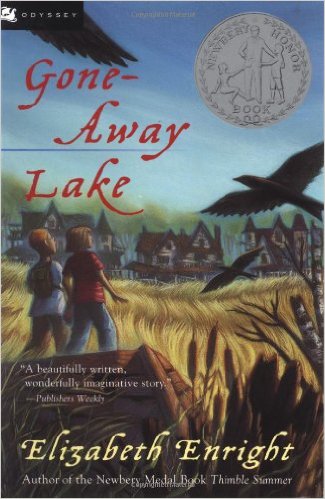
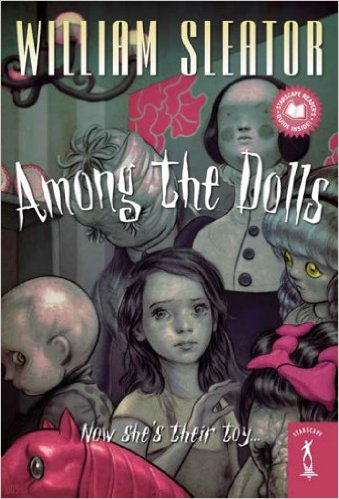

Half Magic, Edward Eager*
Gone-Away Lake, Elizabeth Enright
Among the Dolls, William Sleator
Miss Happiness and Miss Flower, Rumer Godden
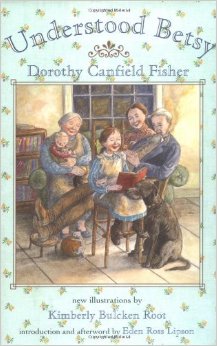
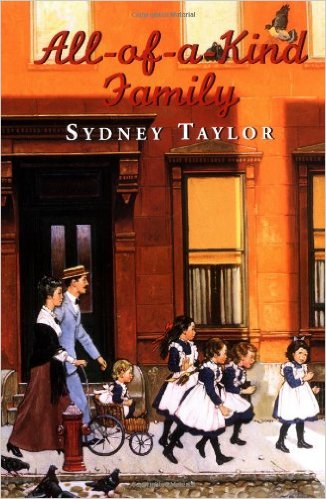
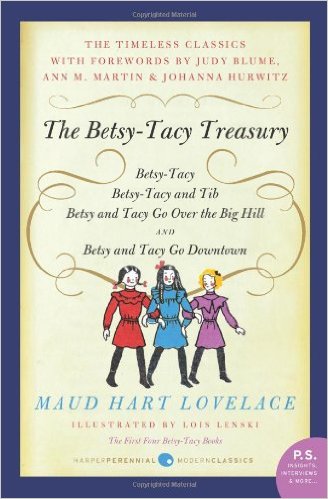
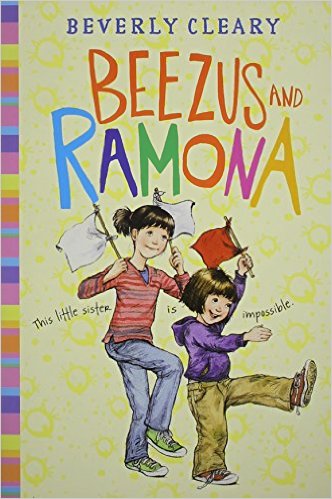
Understood Betsy, Dorothy Canfield Fisher
All-Of-A-Kind Family, Sydney Taylor*
Betsy-Tacy series, Maud Hart Lovelace (see my Reader’s Guide to Betsy-Tacy)
Beezus and Ramona, Beverly Cleary*
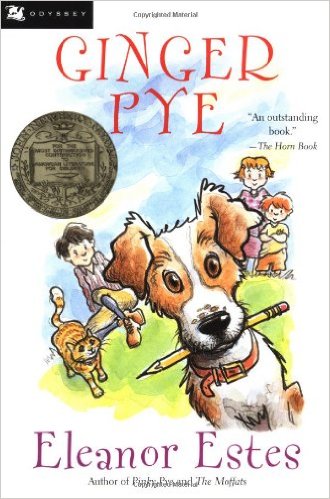

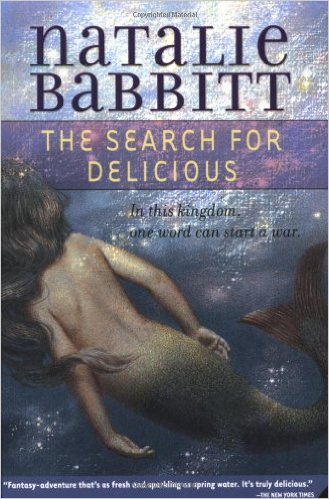
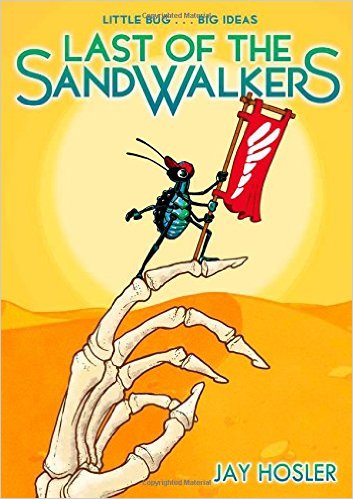
Ginger Pye, Eleanor Estes*
The Twenty-One Balloons, William Pene du Bois
The Search for Delicious, Natalie Babbitt
The Last of the Sandwalkers, Jay Hosler
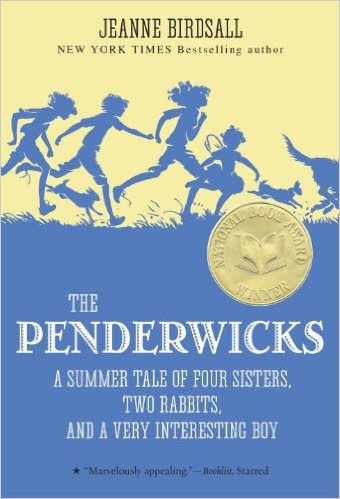
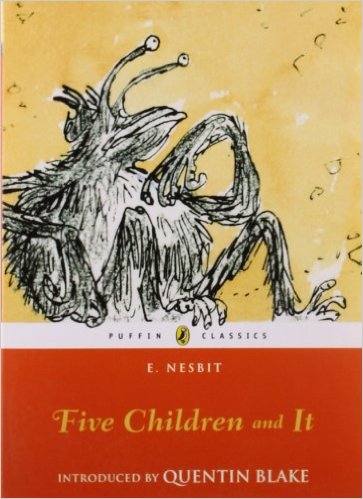
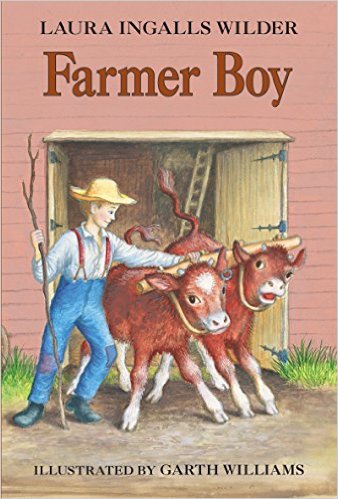

The Penderwicks, Jeanne Birdsall*
Five Children and It, E. Nesbit*
Farmer Boy, Laura Ingalls Wilder*
The Borrowers, Mary Norton*


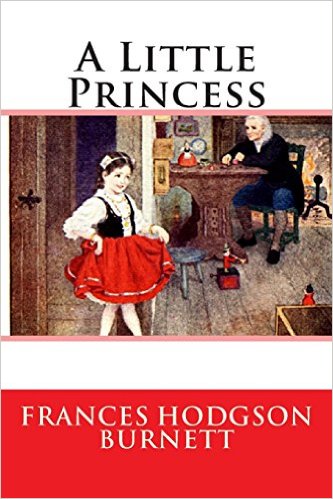
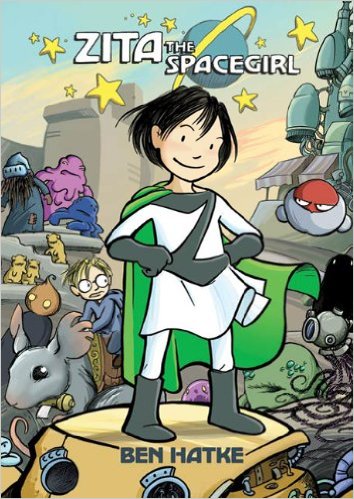
The Gammage Cup, Carol Kendall* (my review)
Rowan of Rin, Emily Rodda*
A Little Princess, Frances Hodgson Burnett
Zita the Spacegirl, Ben Hatke*

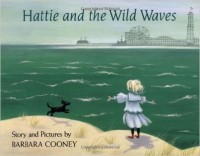
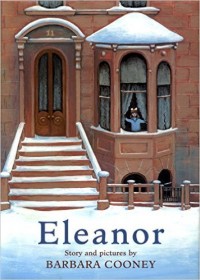
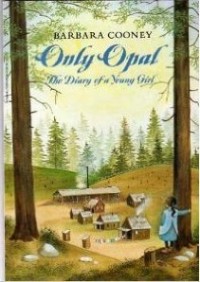
Hattie and the Wild Waves, Barbara Cooney
Eleanor, Barbara Cooney
Only Opal, Barbara Cooney
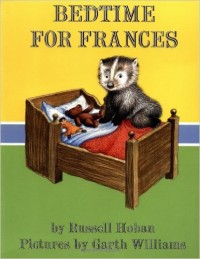
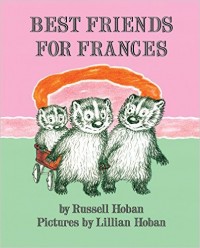
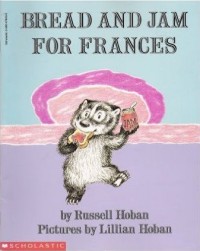
Bedtime for Frances, Russell Hoban
Best Friends for Frances, Russell Hoban
Bread and Jam for Frances, Russell Hoban (nine years old is a perfect time to revisit Frances)
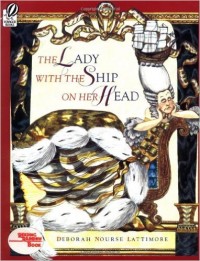
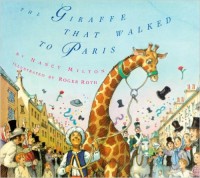
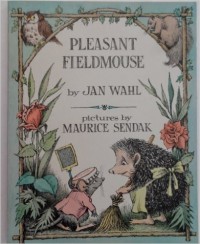
The Lady with the Ship On Her Head, Deborah Nourse Lattimore
The Giraffe that Walked to Paris, Nancy Milton
Pleasant Fieldmouse, Jan Wahl
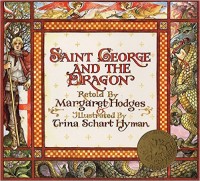
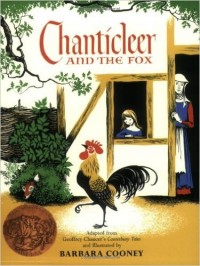
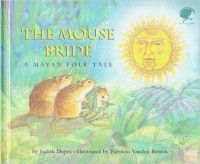
Saint George and the Dragon, Margaret Hodges
Chanticleer and the Fox, Barbara Cooney
The Mouse Bride, Judith Dupre
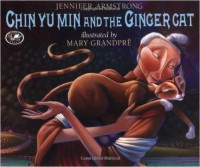
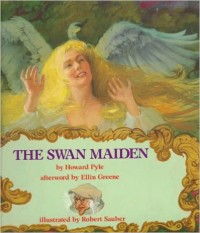
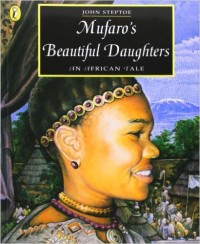
Chin Yu Min and the Ginger Cat, Jennifer Armstrong
The Swan Maiden, Howard Pyle
Mufaro’s Beautiful Daughters, John Steptoe
(The folk and fairy tales could easily go with the group below, so I’ve stuck them kind of in between)

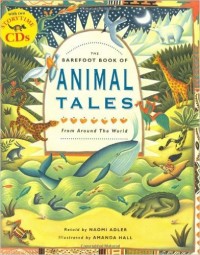



Barefoot Book of Animal Tales, Naomi Adler
Favorite Greek Myths, Mary Pope Osborne
D’Aulaires’ Book of Greek Myths
A Wonder Book for Girls and Boys, Nathaniel Hawthorne
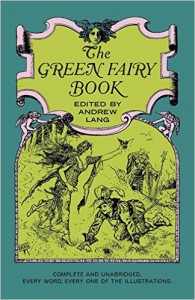
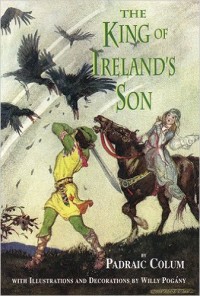
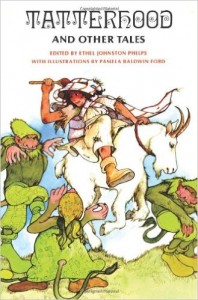
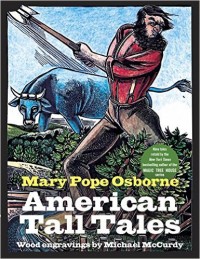
The Green Fairy Book, Andrew Lang*
The King of Ireland’s Son, Padraic Colum
Tatterhood and Other Tales, Ethel Johnston Phelps
American Tall Tales, Mary Pope Osborne (finishing this one up)

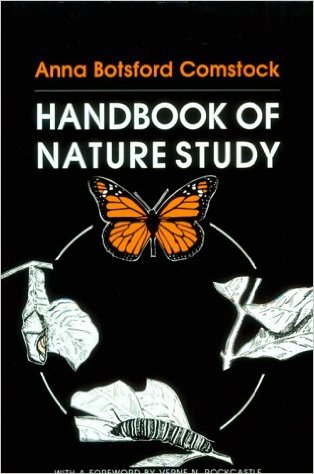
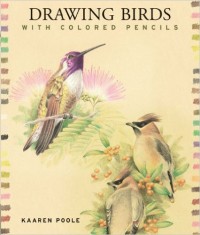
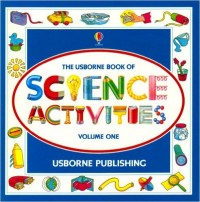
Handbook of Nature Study, Anna Botsford Comstock (with some Outdoor Hour Challenges)
Drawing Birds with Colored Pencils, Kaaren Poole
Usborne Science Activities, Volume 1
Various field guides: Insects, Birds, Rocks
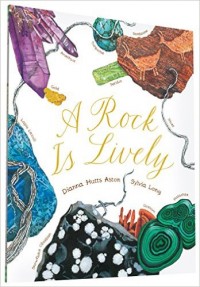
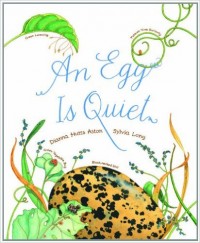
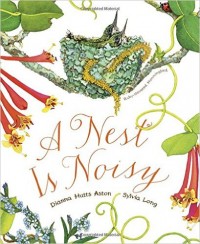
A Rock Is Lively, Dianna Aston & Sylvia Long
An Egg Is Quiet, Dianna Aston & Sylvia Long
A Nest is Noisy, Dianna Aston & Sylvia Long

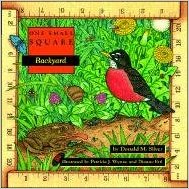
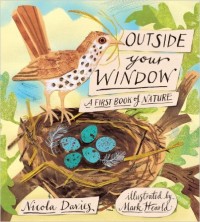
Enid Blyton’s Nature Lovers Book
One Small Square: Backyard, Donald M. Silver
Outside Your Window, Nicola Davies (nature poems)

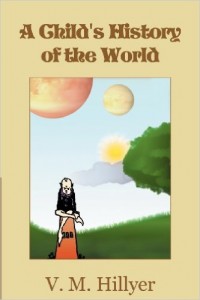
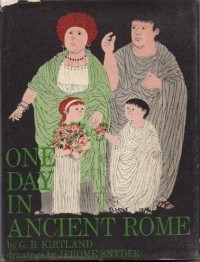
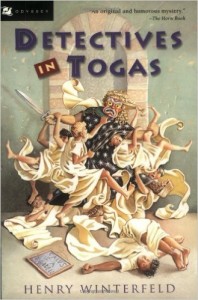
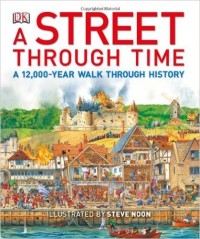
A Child’s History of the World, Virgil M. Hillyer (2-3 chapters a week)
One Day In Ancient Rome, G.B. Kirtland
Detectives in Togas, Henry Winterfield
A Street Through Time, Anne Millard
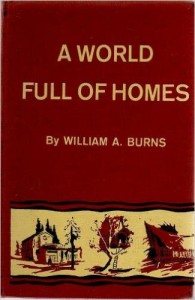

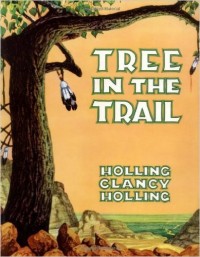
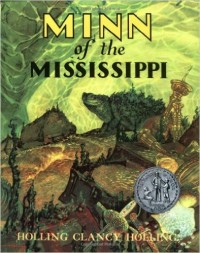
A World Full of Homes, William A. Burns
Material World: A Global Family Portrait
Tree in the Trail, Holling Clancy Holling (finishing from the spring)
Minn of the Mississippi, Holling Clancy Holling (a lot of nature/science crossover here)

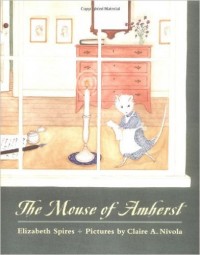
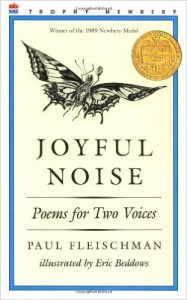

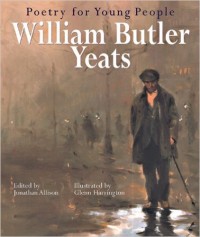
The Mouse of Amherst, Elizabeth Spires (yes, again)
Joyful Noise: Poems for Two Voices, Paul Fleischman
Poetry for Young People: African American Poetry
Poetry for Young People: William Butler Yeats
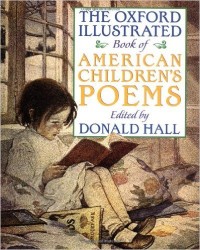
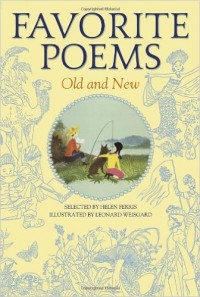
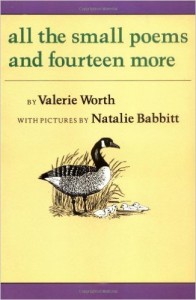
The Oxford Illustrated Book of American Children’s Poems, Donald Hall
Favorite Poems Old & New, edited by Helen Ferris (a family treasure!)
All the Small Poems & Fourteen More, Valerie Worth

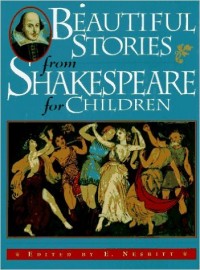
Poetry for Young People: William Shakespeare
Beautiful Stories from Shakespeare for Children, E. Nesbit (one story a week)


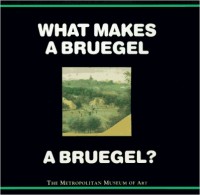
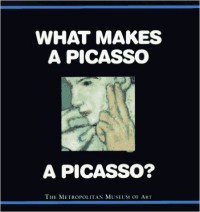
Michaelangelo, Diane Stanley
What Makes a Bruegel a Bruegel
What Makes a Picasso a Picasso

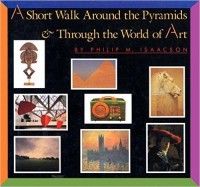
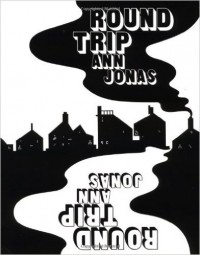
Round Buildings, Square Buildings, Buildings That Wriggle Like a Fish, Philip M. Isaacson (posted about here)
A Short Walk Around the Pyramids & Through the World of Art, Philip M. Isaacson
Round Trip, Ann Jonas (a favorite with my babies, but if you look at it you’ll see why it works for art as well)
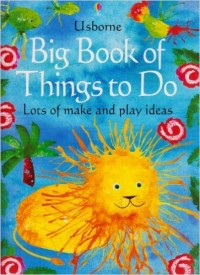
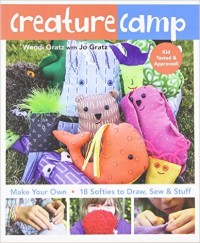
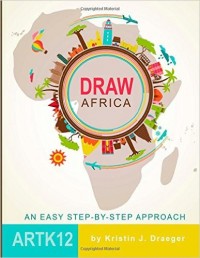
Usborne Big Book of Things Do
Creature Camp: 18 Softies to Draw, Sew, & Stuff, Wendi Gratz
Draw Africa by Kristin J. Draeger
So many books!
As I said, I don’t expect to read this entire list in a single year, especially the fiction selections at the top. And I’m sure Rilla will encounter other enticing titles along the way. Or maybe she’ll get hooked on Redwall or Warriors like her sisters did at this age, and read those obsessively to the exclusion of things on this list. The point is for us to have a rich bounty to draw from, a shelf she knows she can go to whenever she needs something new. I would hazard we’ll manage 1-2 read-aloud novels per month, depending on length. The rest will be options for her to read on her own. I’ll let you know which ones we pick for read-aloud time.
The lower chunk of the list will serve as the spine for our high-tide mornings. A typical day’s reading looks something like:
• Chapter of current read-aloud novel
• A poem or two, sometimes to memorize
• A chapter of Child’s History of the World or a passage from Handbook of Nature Studies (alternating days)
• A Greek myth, folk tale, or Shakespeare story (about twice a week, and this may include longer picture books)
• Something from the art, science, or history lists (perhaps we do an experiment from Usborne Science Activities, or maybe we spend some time poring over Brueghel’s paintings, for example)
• Whatever other books she is reading on her own
Some days have more reading aloud, some days less. Some days I focus more on the teens. Or a big sister might read to Huck and Rilla while I work with the other teen. Some days (or weeks) we’ll follow a rabbit trail that may involve a library trip or two. But we always circle back to the tried-and-true favorites above (plus one or two new treasures). I love this list so much. These books live in that wonderful late-elementary space I love so dearly—as a writer, a reader, and a mom.
Next up: Huck’s list! (Give me a few days.) 😉
Other Bonny Glen booklists:
Books to Read to Your Three-Year-Old
Books to Read to Your Four-Year-Old
My Big List of Book Recommendations
Science, Art, Game Ideas
What is Tidal Homeschooling?
Just read at Lindafay’s blog (the always excellent Higher Up and Further In) that Jacci of An Educational Life has begun a biweekly Charlotte Mason Blog Carnival. I am so there!

Submit entries here by Monday night. The first edition will appear at Jacci’s blog on Tuesday, September 19. This issue’s theme will be "The Great Outdoors." Hmm, I just might have an entry on that topic…
This is part of a (much) longer response to the comments on my "Lovely, Lovely Low Tide" post. I thought this part of my comment was relevant to the ongoing discussion here:
I am certainly not perfect
and I try show my warts and all on this blog. I am constantly pondering
and working with questions, and I wonder sometimes if that makes me
seem inconsistent, like people must be wondering if I’m ever going to
pick a lane! I am comfortable, though, with who I am (my favorite John
Paul II quote was, "Families, be who you are!"), and who I am is
someone who likes to mull over a wide range of ideas and see what
WORKS. For me, for us, for my kids, my husband, in our unique and
ever-changing situation.
I sometimes do feel an urge to "belong" to one school of thought or
another, to find that label that fits me perfectly. As I said in my
original Tidal Learning post, I couldn’t find the label, so I made one
up. It’s useful mainly as a way of answering people’s questions when I
meet a new homeschooler.
I have written elsewhere about how some part of me seems to stick out
of every niche I enjoy visiting (and that is probably true for most
people). I’m a pro-life Democrat, for Pete’s sake! Sort of. Ha!—I
don’t even fit THAT label across the board.
But still there is that desire to find the perfect label. There are
times I read Charlotte Mason and think: She makes so much sense! I want
to be a whole-hog CMer! And other times when I read Sandra Dodd and
think YES, I grok that, I’m an unschooler! But the reality is, I have
places where my understanding doesn’t completely line up with either CM
*or* radical unschooling. And that’s fine. I can still learn from both
schools (unschools?) of thought, and identify with aspects of each.
One area I’m keenly interested in is the balance between a rich
unschooling environment (the kind of environment & relationships
Sandra describes so vividly in her book and site) and the logistical challenges
of raising a big family, especially with my special-needs son. When
you’ve got big kids and babies in the same house, all with their own
(sometimes conflicting) needs, you’re probably going to have to make
compromises somewhere. Tia, that’s the issue you seemed to be exploring
in your post on Always Learning—-how your need for a clean, uncluttered
space seems to you a valid need that benefits the whole family, and how
you feel able to maintain that without shortchanging your children of
your time or attention. It seems like a good question to explore, but
is perhaps a bit out of context on that particular list. And I saw that
the reactions of experienced radical unschoolers there were coming out
of a sense of concern that your vision of it being possible to maintain
a tidy home while unschooling might make newbies feel like failures if
they can’t pull that off.
Probably some of the friction comes in the different definitions people
have of unschooling. I try to consistently use "radical unschooling"
when describing the lifestyle Sandra speaks of, which incorporates an
approach to parenting that believes kids grow up happier and nicer if
there aren’t constant conflicts with parents over chores, TV, and so
forth; and that the way to avoid that kind of tension is to relax
control in those and other areas.
While I find much to learn from in that vision of parenting, I cannot
say it totally lines up with mine. I’m completely on board with "say
yes as often as possible"—but I also see myself as the leader of this
crew of kids and am comfortable with the notion of parents being in authority
over their children. I don’t see authority as a bad thing or
necessarily meaning there will be friction and discontented children.
But I digress. I was saying that as I understand it, "radical
unschooling" has a specific meaning, and some discussions are not going
to be relevant in a radical unschooling context.
Just plain "unschooling" is a tricky term, because to some it means
radical unschooling, and to others it means "kids growing up without
‘doing school’ either in a schoolhouse or at home"—without necessarily
applying to *parenting* style. You’ll find, then, families who consider
themselves unschoolers but where the parents have an authoritative (not
the same as *authoritarian*, and I credit Jeanne Faulconer for writing
a post years ago that first made that distinction clear to me)
parenting style. That probably best describes how Scott and I are
raising our kids. So while I have great respect for people like Sandra
who have, by all accounts, raised some fabulous, considerate,
compassionate, respectful, nice kids according to the parenting
principles that accompany radical unschooling, I’m coming from another
perspective, one informed by my Catholicism (the only label that truly
fits me across the board), my experience, my husband’s viewpoints, and
the temperaments and needs of our specific children.
So yes, I think you can be both an authoritative parent and an
unschooler, and there are unschooling discussion lists where it might
be interesting to have that discussion, but I would naturally expect the
experienced & happy radical unschoolers to speak up with strong
arguments from their perspective. And if they all disagreed with my
opinion, I’d have to say, well, I went to the vegetarian banquet
looking for hamburger recipes!
Still, I love to hear the RU perspective, with its emphasis on JOY.
Joyful parent/child relationships, joyful person/learning
relationships, peace and delight and harmony in the home and with the
world. It’s a refreshing vision—invigorating, I think is the word I
used in my Low Tide post. Sandra’s work truly refreshes and empowers
me, and I would hate to discourage anyone from encountering it, even if
I’m not a radical unschooler myself.
One insight I had about myself during this current re-immersion in
Sandra’s website & list is that I was able to put my finger on why
our foray into pure CM method this past winter/spring fell flat after
six weeks, so that I found myself—for the first time in our
homeschooling experience—with a roomful of discontented kids.
(Discontented with our learning experiences, I mean. They have
certainly all been discontented before, like whenever I cook dinner.)
The realization that
came to me via my rethinking Sandra’s philosophy is that what was
different about our High Tide time this winter was that always before,
while we may have been taking an excursion aboard the S.S. Charlotte
Mason, I was captain of the ship, adjusting our course as needed, and
pulling into port for refreshment or exploration as my young sailors
required. This time around, I turned the ship’s wheel over to Cap’n
Mason herself—and much as I love her captain’s logs, she doesn’t know
my crew the way I do. After six weeks, they were ready to mutiny.
So I am back where I belong: comfortable in my own shoes. I’m a Tidal
Homeschooler, and it works for us, makes for fun times with my happy,
pleasant children. But it was the Radical Unschoolers who taught me
this lesson, and I will continue to enjoy learning from their
perspective— just as I learn from the pure Charlotte Mason folks and
the Real Learners and the classical-ed folks. I
really, really like to learn. So do my kids, so I’m content to "be who
we are."
The first time I posted about tidal homeschooling at Bonny Glen (in January of 2006), I said,
Our family enjoys both kinds of learning—the heady adventure of the
well-planned fishing trip, with a goal and a destination in mind, and
the mellower joys of undirected discovery during weeks at the
metaphorical beach. Around here, the low-tide times happen much more
often than the high tide times, and often I find that the children
catch more fish, so to speak, when the tide is out. Beachcombing
reveals many treasures.
I was talking about unschooling v. Charlotte Mason-style learning, which, as readers of this blog know, are the two philosophies/methods of education which most resonate with me—even though they are very different philosophies.
We have been unschoolish Charlotte Mason learners, and we have been Charlotte Masonish unschoolers; I described it in that post like this:
[T]he what we do—read great books, study nature, dive deeply into history, immerse ourselves in picture study and composer study—is highly influenced by Charlotte’s writings and their modern counterparts; and the how we do it—through strewing and conversation and leisurely, child-led exploration—is influenced by the writings of John Holt , Sandra Dodd,
, Sandra Dodd,
and other advocates of unschooling. But I couldn’t say we’re “real CMers” because I don’t carry out Miss Mason’s recommendations in anything like the structured manner she prescribed; and I probably do too much behind-the-scenes nudging for us to be considered “real unschoolers.”
I’d say that continues to hold true, a year and a half later. If you start looking for a definition of unschooling, you’ll find there’s a lot of disagreement between different people about what exactly unschooling is, and any definition I attempt to apply to it is simply my own take; but to my way of thinking, the term is most useful when applied to an approach toward childhood in which the parents do not “make” the children “learn stuff.” The children are learning, constantly, enormously; and the parents are actively engaged in discussion and strewing and facilitating and offering new experiences, and at times classes or curricula may be a part of those experiences—but only as the child wishes.
And so, since there have been some studies I have required of my children (Latin, for example), I can’t say I’m a full-fledged unschooler. I am very, very unschooly, most of the time.
This past winter, I veered farther off the unschooling path than ever before, with our very much by-the-book Charlotte Mason term that began after the holidays. And, as I talked about here, it started off great guns, loads of fun, a very rich and animated time of formal learning—and then we hit some rather large bumps and the fun started to spill out of the cart.
Scott’s back went out; we sold our old house; there were lots of
distractions. We stuck to our rhythm of morning read-alouds and
narrations, but last week I noticed the kids were squabbling with each
other a lot and our lesson time was turning grumpish.
(And re-reading that post, I see that a lot of what I’m writing here is a repeat of that one.)
I reassessed and saw that the year’s upheaval had tangled us up quite a bit, and I turned to my favorite homey activities to help us untangle: we immersed ourselves in the soothing pursuits of baking, painting, making things with yarn or clay, singing, telling stories. Our CM lessons continued but at a slower pace, and mostly for Jane. Gradually, as our spring got busy with recitals and outings, I retired the CM schedule altogether. I did this without fanfare or announcement, and the children seemed scarcely to notice: they’ve been too busy learning.
Learning about (to rattle off a few topics from the past week) the history of purple dye, the legends of Hercules, musical notes, how to make cookies without mom’s help, how to adapt a knitting pattern for crochet, measurement, air pressure (pumping up a baby pool and watching the pressure gauge), geography, San Francisco, the Golden Gate Bridge, ISBNs and book cataloging, ocean life (could be a long list itself), the joys of playing in the sea, snakes, turtles, goats, miniature horses, Lightning Lad and Superboy, writing and cracking codes—and that probably isn’t the half of it. Just today, Rose sat down to write a story, and when it was finished, she asked me to correct it (“I want it to be like a real book”), and that led to conversation about spelling rules (slam/slamming, split/splitting, reply/replied), punctuating dialogue, indenting paragraphs and when to start a new paragraph, capitalization of titles, when to capitalize “mom” and when not to, and more grammar stuff that I can’t remember.
Whenever our low-tide times come around, I laugh at myself for forgetting how true are the words I wrote above: I find that the children
catch more fish, so to speak, when the tide is out.
A week or two ago, reveling in the richness of low tide, I got in the mood to read some Sandra Dodd. Sandra’s website is one of the best educational resources on the ‘net. She has been collecting wisdom from experienced unschoolers (including herself) for over ten years, and her site is a vast (really, I’m not using the word carelessly—there must be a hundred? pages there, at least)* repository of quotes and anecdotes to inspire and edify anyone who is interested in how people learn. Be careful; you’ll lose yourself there for hours.
But you’ll find yourself, too. Sandra always makes me think. She can be challenging, in the sense of ‘one who challenges you to examine your assumptions.’ I’ve lurked on her email lists on and off over the years (and not always lurking; I used to participate in the discussion, two or three younguns ago), and I sometimes found her almost painfully blunt. But now, ten years into my own home education journey, I think I understand why she doesn’t mince words in conversation with other homeschooling/ unschooling parents. She doesn’t want them to lose precious time to friction and tension. She wants there to be joy and delightful connectedness between parents and children, always and as soon as possible.
I don’t necessarily agree with her on every topic, but I appreciate the way she gets me questioning, pushing, pondering, learning. I like her emphasis on saying yes as often as possible. That one simple idea can effect HUGE changes in your relationship with your kids. Sometimes I get so busy, so caught up in the logistics of managing this busy household, that I drift into scolding mode. Ugh. Sandra’s work reminds me not to scold, but rather to listen, and to smile, and instead of barking out a kneejerk “No” to the child who proposes something, to ask myself “Why not?”
A small example. On Sunday after Mass, the three older girls and I were standing on the sidewalk outside church, waiting for Scott to pick us up. There are two entrances to the church parking lot, and I had positioned myself at the corner of a traffic lane in the lot, so that I could see both entrances. I didn’t know which way he’d come in. The girls wanted to cross to the other side of the lane. I didn’t want to, because then I would only be able to watch one of the entrances.
A month ago, all wrapped up in my brisk busy-ness, I might have simply said no—offering no explanation.
A week ago, with my renewed focus on saying yes and, well, being nice (the busy me is not always the nice me), I might have said, “Sorry, gang; if we cross over there, we won’t be able to see Daddy coming.”
A day ago, with my wits sharpened and my desire to be connected and happy with my children renewed by an immersion in unschooling belief, I asked myself, “Why shouldn’t they cross the lane? I can stay here and watch for Scott. Anyway, even if I don’t stand here, it’s not like he won’t find us. It’s not a big place. Why do I need to watch for him at all? What was I thinking? Or rather, why wasn’t I thinking?”
So I said, “Sure!”
And guess what? Scott found us just fine.
Oooh, that pesky auto-response! It is so easy for a mother’s default setting to be NO. But truly, so unnecessary too.
About the same time I went poking around Sandra’s site, I treated myself to a copy of her book, Moving a Puddle, which is a collection of essays she wrote for homeschooling publications, message boards, and other places. I’d read some of them before, but many of them were new to me and it’s nice to have them all in a book I can curl up with or tuck in my bag. I got halfway through the book and had found so much I wanted to talk about that I simply had to order a copy for my pal Eileen in Virginia, Wonderboy’s godmother and my crony in unschooly Charlotte Masonishness. (Or is that Charlotte Masony unschoolishness?) She received it a few days ago and we’ve racked up quite the tasty phone bill, discussing and enthusing every day since she opened the package.
I feel downright invigorated, and I didn’t even know I needed invigorating.
Of course this begs the question: if low tide is so fabulous, why not stay there forever? Why have high-tide times at all? That’s the question I am continually examining (see this post: Accidental v. On-Purpose Learning), and will be pondering again this summer.
*Turns out there are over FIVE hundred pages at Sandra’s site, and that’s just the unschooling arm of it; she’s got other sections, too. 500! I told you it was vast!
I’ve been looking for the passage I know is in one of Charlotte Mason’s books about making sure children have one or two favorite nature-spots to visit on a regular basis: a park, a garden, a particular wood, a shore, that is visited over and over in all seasons, so that the children may grow familiar with the plants, birds, and beasts that live there, and see how things change throughout the course of a year.
I can’t find the quote, but I know it’s there somewhere: in Home Education, most likely. Miss Mason’s recommendation impressed itself strongly upon me as a young mother in New York, and I dutifully (a delightful duty it was) looked about for a suitable spot or two. I wound up with three, and with bitsy Jane and baby Rose I made pilgrimages to at least one of them every week for years, so that bitsy Jane became bigger Jane and baby Rose was bitsy, and Beanie became the baby.
One of our haunts was the beautiful garden you might have seen recently in the background of Alice’s Midsummer Night’s Dream pictures. And yes, on those outings Alice and her bonny clan were usually by our side—Alice, naturally, having been the person to introduce me to the garden in the first place. A weathered journal filled with Jane’s primitive sketches of flowers from that garden remains one of my most cherished mementos of those green-golden days.
This place was our other favorite spot: five minutes from home, with woods to tramp in and a long stretch of rocky, sandy shore on the Long Island Sound. Sands Point was our year-round nature spot, the place we went to crunch over snow through leafless woods, or to hunt for horseshoe crabs and bury our feet in wet sand.

In Virginia, we were so blessed as to have nature trails around the undeveloped perimeter of our neighborhood, the trailhead lying at the bottom of our very own street. On those leafy paths we learned "the green ways of growing." We met a woodchuck, several snakes, some woodpeckers, a bevy of chickadees, and, once, a terrifying dog. There was a fallen tree all the kids called a fort, and a creek for floating fairy-leaves down, and stones for skipping, and a long hike through a marshy meadow to a lake where the Canada geese congregated on October evenings. A bald eagle was rumored to live there, though we never saw him.

We also frequented Ivy Creek Natural Area, the site of Jane’s best butterfly encounters. It was there we became acquainted with the beech and the sassafras, the wingstem and the woolly aphid. I always meant to spend more time at Ivy Creek than just the once-a-month summer butterfly walks (and the annual native plant sale); but the years we lived there were dominated by Wonderboy’s medical adventures, and we didn’t make it out as often as I’d have liked.
Now here we are in San Diego. Our first six tumultuous months of settling in are behind us. We have only just begun to explore all that is new and delicious in this part of the country; before we arrived, a sweet friend sent us a two-inch-thick book of Fun Places to Go with Kids in Southern California, and though we’ve had a busy and adventure-packed six months, we’ve only made our way through the tiniest sliver of that book. (Blame the Zoo: we keep going back and back for more.) But I find myself drawing a breath and knowing it’s time to find "our spots"—a Sands Point, an Ivy Creek, a place or two we can be more than just acquainted with: a place or two to know intimately.
The quest itself is one of the great delights of moving someplace new. In New York, there was a third "our spot": a lovely garden tucked in the midst of suburbia, a quiet oasis of pond and flowered path. There, too, we often rendezvoused with Alice and her girls (we moved just weeks after Patrick’s birth), and Alice and I would sit in the shade while our little lasses counted turtles in the pond. You could drive right by this garden and have no idea it was there; I think I did drive by probably hundreds of times before I ever set foot through the gates into that little Eden.
Sometimes, as I drive around this western city, I wonder what Edens lie hidden beyond the highway.
I love knowing they’re there, waiting for us to discover them. Our places, our spots: they are waiting for us. What will they be? A ribbon of beach, where we’ll find tidepools and singing waves? A hidden garden, lush and tropical? A windy hilltop where lizards bejewel the warm stones? A place where we will learn the blue, the brown, the golden ways of growing?

A couple of weeks ago, we met some young women who are running a nature studies camp for children this summer. I got to chatting with them, and before I knew it, I had booked one of them to come out to our neighborhood for a guided nature walk sometime soon. One must be on a first name basis with the trees and shrubs one sees every day! This young woman is just our sort of person; she’s into "urban foraging," aka "picking weeds to eat on your salad"—aka "Jane’s kind of person." (My Virginia friends are reading this and laughing, recalling how Jane taught their children to nibble chickweed for iron and violets for vitamin C. Playing in our yard generally meant going home with green teeth.)
After this nice urban forager introduces us to our leafy green neighbors, I’m going to have her take us farther afield, perhaps to Mission Trails Park, where Father Serra, our family’s new patron saint, once trod.
I still can’t find the Charlotte Mason quote I want. Here, though, is what she has to say about "Out-of-Door Life for the Children":
Meals out of Doors.––People who live in the country know the value of fresh air very well, and their children live out of doors, with intervals within for sleeping and eating. As to the latter, even country people do not make full use of their opportunities. On fine days when it is warm enough to sit out with wraps, why should not tea and breakfast, everything but a hot dinner, be served out of doors? For we are an overwrought generation, running to nerves as a cabbage runs to seed; and every hour spent in the open is a clear gain, tending to the increase of brain power and bodily vigour, and to the lengthening of life itself. They who know what it is to have fevered skin and throbbing brain deliciously soothed by the cool touch of the air are inclined to make a new rule of life, Never be within doors when you can rightly be without.

Besides, the gain of an hour or two in the open air, there is this to be considered: meals taken al fresco are usually joyous, and there is nothing like gladness for converting meat and drink into healthy blood and tissue. All the time, too, the children are storing up memories of a happy childhood. Fifty years hence they will see the shadows of the boughs making patterns on the white tablecloth; and sunshine, children’s laughter, hum of bees, and scent of flowers are being bottled up for after refreshment.
For Dwellers in Towns and Suburbs.––But it is only the people who live, so to speak, in their own gardens who can make a practice of giving their children tea out of doors. For the rest of us, and the most of us, who live in towns or the suburbs of towns, that is included in the larger question––How much time daily in the open air should the children have? And how is it possible to secure this for them? In this time of extraordinary pressure, educational and social, perhaps a mothers first duty to her children is to secure for them a quiet growing time, a full six years of passive receptive life, the waking part of it spent for the most part out in the fresh air. And this, not for the gain in bodily health alone––body and soul, heart and mind, are nourished with food convenient for them when the children are let alone, let to live without friction and without stimulus amongst happy influences which incline them to be good.
Possibilities of a Day in the Open.––I make a point, says a judicious mother, of sending my children out, weather permitting, for an hour in the winter, and two hours a day in the summer months. That is well; but it is not enough. In the first place, do not send them; if it is anyway possible, take them; for, although the children should be left much to themselves, there is a great deal to be done and a great deal to be prevented during these long hours in the open air. And long hours they should be not two, but four, five, or six hours they should have on every tolerably fine day, from April till October. Impossible! Says an overwrought mother who sees her way to no more for her children than a daily hour or so on the pavements of the neighbouring London squares. Let me repeat, that I venture to suggest, not what is practicable in any household, but what seems to me absolutely best for the children; and that, in the faith that mothers work wonders once they are convinced that wonders are demanded of them. A journey of twenty minutes by rail or omnibus, and a luncheon basket, will make a day in the country possible to most town dwellers; and if one day, why not many, even every suitable day?
Oh, Charlotte, Charlotte, how I love you. You are, I suppose, assuming I have a cheery, red-cheeked housemaid to keep my home in order while I spend not two, but four, five, or six hours a day outside with my children…and of course in this particular book you are speaking of my youngest children only, the six-and-under crowd. What you do not realize, my dear, is that I’m a devotee of your later writings, and my days are therefore arranged so as to allow for lengthy reading sessions replete with narration. But, please, do go on.
Supposing we have got them, what is to be done with these golden hours, so that every one shall be delightful? They must be spent with some method, or the mother will be taxed and the children bored. There is a great deal to be accomplished in this large fraction of the children’s day. They must be kept in a joyous temper all the time, or they will miss some of the strengthening and refreshing held in charge for them by the blessed air. They must be let alone, left to themselves a great deal, to take in what they can of the beauty of earth and heavens; for of the evils of modern education few are worse than this––that the perpetual cackle of his elders leaves the poor child not a moment of time, nor an inch of space, wherein to wonder––and grow. At the same time, here is the mother’s opportunity to train the seeing eye, the hearing ear, and to drop seeds of truth into the open soul of the child, which shall germinate, blossom, and bear fruit, without further help or knowledge of hers. Then, there is much to be got by perching in a tree or nestling in heather, but muscular development comes of more active ways, and an hour or two should be spent in vigorous play; and last, and truly least, a lesson or two must be got in.
No Story-Books.––Let us suppose mother and children arrived at some breezy open wherein it seemeth always afternoon. In the first place, it is not her business to entertain the little people: there should be no story-books, no telling of tales, as little talk as possible, and that to some purpose. Who thinks to amuse children with tale or talk at a circus or pantomime? And here, is there not infinitely more displayed for their delectation? Our wise mother, arrived, first sends the children to let off their spirits in a wild scamper, with cry, hallo, and hullaballo, and any extravagance that comes into their young heads. There is no distinction between big and little; the latter love to follow in the wake of their elders, and, in lessons or play, to pick up and do according to their little might. As for the baby, he is in bliss: divested of his garments, he kicks and crawls, and clutches the grass, laughs soft baby laughter, and takes in his little knowledge of shapes and properties in his own wonderful fashion––clothed in a woollen gown, long and loose, which is none the worse for the worst usage it may get.
II.––Sight-Seeing
By-and-by the others come back to their mother, and, while wits are fresh and eyes are keen, she sends them off on an exploring expedition––Who can see the most, and tell the most, about yonder hillock or brook, hedge, or copse. This is an exercise that delights children, and may be endlessly varied, carried on in the spirit of a game, and yet with the exactness and carefulness of a lesson.
How to See.––Find out all you can about that cottage at the foot of the hill; but do not pry about too much. Soon they are back, and there is a crowd of excited faces, and a hubbub of tongues, and random observations are shot breathlessly into the mother’s ear. ‘There are bee-hives.’ ‘We saw a lot of bees going into one.’ ‘There is a long garden.’ ‘Yes, and there are sunflowers in it.’ ‘And hen-and-chicken daisies and pansies.’ ‘And there’s a great deal of pretty blue flowers with rough leaves, mother; what do you suppose it is?’ ‘Borage for the bees, most likely; they are very fond of it.’ ‘Oh, and there are apple and pear and plum trees on one side; there’s a little path up the middle, you know.’ ‘On which hand side are the fruit trees?’ ‘The right––no, the left; let me see, which is my thimble-hand? Yes, it is the right-hand side.’ ‘And there are potatoes and cabbages, and mint and things on the other side.’ ‘Where are the flowers, then?’ ‘Oh, they are just the borders, running down each side of the path.’ ‘But we have not told mother about the wonderful apple tree; I should think there are a million apples on it, all ripe and rosy!’ ‘A million, Fanny?’ ‘Well, a great many, mother; I don’t know how many.’ And so on, indefinitely; the mother getting by degrees a complete description of the cottage and its garden.
Educational Uses of Sight-Seeing.––This is all play to the children, but the mother is doing invaluable work; she is training their powers of observation and expression, increasing their vocabulary and their range of ideas by giving them the name and the uses of an object at the right moment,––when they ask, ‘What is it?’ and ‘What is it for?’ And she is training her children in truthful habits, by making them careful to see the fact and to state it exactly, without omission or exaggeration. The child who describes, ‘A tall tree, going up into a point, with rather roundish leaves; not a pleasant tree for shade, because the branches all go up,’ deserves to learn the name of the tree, and anything her mother has to tell her about it. But the little bungler, who fails to make it clear whether he is describing an elm or a beech, should get no encouragement; not a foot should his mother move to see his tree, no coaxing should draw her into talk about it, until, in despair, he goes off, and comes back with some more certain note––rough or smooth bark, rough or smooth leaves,––then the mother considers, pronounces, and, full of glee, he carries her off to see for himself.
Discriminating Observation.––By degrees the children will learn discriminatingly every feature of the landscapes with which they are familiar; and think what a delightful possession for old age and middle life is a series of pictures imaged, feature by feature, in the sunny glow of the child’s mind! The miserable thing about the childish recollections of most persons is that they are blurred, distorted, incomplete, no more pleasant to look upon than a fractured cup or a torn garment; and the reason is, not that the old scenes are forgotten, but that they were never fully seen. At the time, there was no more than a hazy impression that such and such objects were present, and naturally, after a lapse of years those features can rarely be recalled of which the child was not cognisant when he saw them before him.
III.––’Picture-Painting’

Method of.––So exceedingly delightful is this faculty of taking mental photographs, exact images, of the beauties of Nature we go about the world for the refreshment of seeing, that it is worth while to exercise children in another way towards this end, bearing in mind, however, that they see the near and the minute, but can only be made with an effort to look at the wide and the distant. Get the children to look well at some patch of landscape, and then to shut their eyes and call up the picture before them, if any bit of it is blurred, they had better look again. When they have a perfect image before their eyes, let them say what they see. Thus: ‘I see a pond; it is shallow on this side, but deep on the other; trees come to the waters edge on that side, and you can see their green leaves and branches so plainly in the water that you would think there was a wood underneath. Almost touching the trees in the water is a bit of blue sky with a soft white cloud; and when you look up you see that same little cloud, but with a great deal of sky instead of a patch, because there are no trees up there. There are lovely little water-lilies round the far edge of the pond, and two or three of the big round leaves are turned up like sails. Near where I am standing three cows have come to drink, and one has got far into the water, nearly up to her neck,’ etc.
Strain on the Attention.––This, too, is an exercise children delight in, but, as it involves some strain on the attention, it is fatiguing, and should only be employed now and then. It is, however, well worth while to give children the habit of getting a bit of landscape by heart in this way, because it is the effort of recalling and reproducing that is fatiguing; while the altogether pleasurable act of seeing, fully and in detail, is likely to be repeated unconsciously until it becomes a habit by the child who is required now and then to reproduce what he sees.
Seeing Fully and in Detail.––At first the children will want a little help in the art of seeing. The mother will say, ‘Look at the reflection of the trees! There might be a wood under the water. What do those standing up leaves remind you of?’ And so on, until the children have noticed the salient points of the scene. She will even herself learn off two or three scenes, and describe them with closed eyes for the children’s amusement; and such little mimics are they, and at the same time so sympathetic, that any graceful fanciful touch which she throws into her descriptions will be reproduced with variations in theirs.
The children will delight in this game of picture-painting all the more if the mother introduce it by describing some great picture gallery she has seen––pictures of mountains, of moors, of stormy seas, of ploughed fields, of little children at play, of an old woman knitting,––and goes on to say, that though she does not paint her pictures on canvas and have them put in frames, she carries about with her just such a picture gallery; for whenever she sees anything lovely or interesting, she looks at it until she has the picture in her mind’s eye; and then she carries it away with her, her own for ever, a picture on view just when she wants it.
It’s good to revisit the books that formed you as a young mother. Eight years ago, Charlotte Mason was my Dr. Spock, and I carried out her recommendations as faithfully as our circumstances allowed. Now my little people are beginning to be bigger people, and it would be quite easy to forget this vision of what life can be like for little ones. I can’t promise four to six hours a day, of course! But one long afternoon a week? That I can aim for, and we’ll all be the better for it.
Now to find our "breezy opens"!

Images courtesy of AntiqueClipart.com.
Jane wrote:
I love your approach, Lissa. Why stick to one way of teaching and learning?
You know, I can see an argument in favor of adopting one consistent methodology and sticking to it. Actually, Charlotte Mason herself makes that argument in my beloved Volume 6:
“The reader will say with truth,—’I knew all this before and have always acted more or less on these principles’; and I can only point to the unusual results we obtain through adhering, not ‘more or less,’ but strictly to the principles and practices I have indicated. I suppose the difficulties are of the sort that Lister had to contend with; every surgeon knew that his instruments and appurtenances should be kept clean, but the saving of millions of lives has resulted from the adoption of the great surgeon’s antiseptic treatment; that is, from the substitution of exact principles scrupulously applied, for the rather casual ‘more or less’ methods of earlier days.”
I admit to having sometimes read these words with a wince, feeling a pang of guilt over not having scrupulously applied any one set of principles. I am an adapter, a tweaker, a “take what works and leave the rest” sort. And here we see Miss Mason herself tsk-tsking the “casual” manner in which I have applied her ideas to my children’s education.
(It isn’t really “casual.” I’m just not going 100% by her book.)
After the wince I always remember that I am working with real people here, and real circumstances quite unlike any Miss Mason might have envisioned when designing her curriculum. She can’t have imagined a mother trying to hear narrations while a hard-of-hearing toddler chatters loudly in the background, like an old man with an ear trumpet unaware that he’s shouting, and a winsome baby steals the pupils’ attention by threatening to take her first walk across the carpet when (gasp, not permitted!) Daddy isn’t home. I doubt she envisioned her method being put to work in homes in which the bulk of the day consists of one adult having full responsibility for the care and education of multiple children, AND meal preparation, AND basic housekeeping. And our “ands” could go on, couldn’t they? AND having paid work to do, AND having to spend a lot of time traveling to doctors’ appointments, AND etc etc etc.
Which is not to say one CAN’T home-educate in complete accordance with Charlotte Mason’s principles. Many people do (check out the Ambleside webring), beautifully, happily, and with great success.
I’m just saying that for me, my family, our tastes and circumstances, CM-inspired works better than full-on CM.
So have you checked out CafeMom yet? It’s a sister site to ClubMom, and it’s pretty nifty. It’s a social networking site for moms. You can set up a profile, join discussion groups, share pictures, and keep a journal of your own. I’ve been poking around over there for the past few weeks, and there is much to enjoy.
Including! I’ve set up a Charlotte Mason discussion group at CafeMom. If you’d like to come ask questions, share insights, and basically dish with me about CM-inspired home education, click the link below and join the fun!
The nice thing about what I call "tidal homeschooling" is that it keeps the pressure off me. By now, I have learned that our family’s life seldom maintains a consistent rhythm longer than, say, four to six weeks. I have learned to enjoy the ebb and flow, the seasonal change. When monkeys toss their fabled wrenches into our works, as those naughty little monkeys are wont to do, I know it’s time to do a little tweaking.
Our "high tide" Charlotte Mason term chugged along nicely during February, but this month we went a bit off kilter. Scott’s back went out; we sold our old house; there were lots of distractions. We stuck to our rhythm of morning read-alouds and narrations, but last week I noticed the kids were squabbling with each other a lot and our lesson time was turning grumpish. That is always, always, a cue for me to shift gears. (And mix metaphors. Good heavens, I am haphazard with the metaphors today. Metaphor soup!)
I’ve mentioned before that my introduction to the idea of homeschooling was through the writings of John Holt and Sandra Dodd. Sandra is the guru of radical unschooling, and though I don’t agree with her take on everything, I have learned a great deal from her writings. Jane was a babe in arms when I began to ponder Sandra’s ideas about children learning naturally, through life experience, apart from school; and truth be told, it was Sandra who sold me on the lifestyle, way back when I was lurking on the homeschooling boards at AOL.
Now you know that while I have a big streak of unschoolishness in me, I’m not an unschooler per se; the Charlotte Mason method, applied according to her principles, is not unschooling. But Charlotte, too, envisioned the kind of happy and eager childhood that you hear about in the writings of the unschoolers. And that’s my main answer to the question, "Why do you homeschool your kids?" I say, "Because I think it’s a way to give kids a great education and a joyful childhood."
During our low-tide times, which occupy the larger portion of the year, we are like unschoolers. We live and play; we take care of our home together, the children and I; we have adventures and read lots of great books.
During our high-tide times, we keep doing all of the above, but I’m the one picking out the books, and I have the kids narrate a lot of the reading back to me, and we work more deliberately on mastering skills that take practice, like piano and math and Latin.
After the big adventure of moving to California, quickly followed by the big adventure that is Christmas, all of us were ready for some structure, some predictability. Hence our current lineup of studies a la Miss Mason. And as I said, our "term" (the term amuses us, ba dum bum) got off to a terrific start. Last week, when the fun started to fizzle, I gave some thought to what might need tweaking.
The first question I always ask myself when I’m assessing our family rhythm is "What would we be doing if we weren’t doing this?" If, for example, we weren’t spending three mornings a week reading and narrating, how would we spend them? We already have activities the kids love which take us out of the house twice a week, sometimes more; plus I’ve tried to be good about making spontaneous outings to the zoo or the park, exploring this vast new land we’ve moved to. I find that an important ingredient for family harmony is having plenty of mellow time at home. I am not, therefore, inclined to add any more activities to the mix right now.
Home time, then. The kids want to do more painting. Check. I can make that happen. They want to do more baking, and Easter is around the corner…Check. Jane has a flat of herb seedlings going, and all of us are in the mood to do some gardening ("all of us" as in the entire Northern hemisphere), so: Check.
Thus far in my ponderings, I have found nothing that really requires a tweak. We can do all those things any afternoon of the week; I just need to remember to DO them. (Check.)
But the grumpishness of the last week or so, that’s got to go. That’s where the tweaking comes in. What jumped out at me when I gave some thought to the question was that it has everything to do with the challenge of keeping five small people happy at once. (Make that four small people and one medium-sized person; Jane is really getting to be such a big kid.)
I decided I was trying to do too much all together. After traveling in a pack (both literally and figuratively) for the past nine months, my kids are ready for some one-on-one time with me. This can be as simple as making sure Beanie gets to help me wash dishes, or Jane gets me for a few screens of Absurd Math, her favorite online pastime. Rose wants to stretch out on my bed and chatter; she is my most introverted child, and I think she soaks up a lot of observations during the big group activities and wants my ear in which to pour them later on.
This morning I gave Rose a stack of books and helped her set up camp on my bed. She beamed. While Jane read a picture book to Beanie, I spent some one-on-one with Rose. Then I grabbed Bean for some cozy couch time, and we rediscovered Eric Carle’s Animals Animals together. Jane went off to her favorite corner of the craft room and read the books I’d given her; later she came back and narrated to me while I changed a few diapers, nursed the baby, unloaded the dishwasher. It was a good morning. The house is a mess but our moods are tweaky clean.
The Simply Charlotte Mason folks have just debuted a new record-keeping tool designed specifically for Charlotte Mason homeschoolers. You enter the books you plan to use for each student, and the CM Organizer schedules the readings over the span of time you indicate. Then it generates daily schedules with clickboxes for you to check off. Another feature creates reports showing your progress.
The website has video demos of all the nifty features, and SCM is offering a free 30-day trial period so you can live with the organizer for a month and decide if it’s worth the $9.95/month subscription fee.
I am currently reading the Simply Charlotte Mason habits book, Laying Down the Rails, and will write more about that when I’m finished. Which, judging from the state of Scott’s back, might be a while.

 I’m quite sure other titles will join the list as we go. I can already think of a few I’ve left off, but which she may be ready for by the end of the year. (It doesn’t help that Jane keeps thrusting more books at me. “I loved this one at her age!” She’s my daughter, all right.) 😉
I’m quite sure other titles will join the list as we go. I can already think of a few I’ve left off, but which she may be ready for by the end of the year. (It doesn’t help that Jane keeps thrusting more books at me. “I loved this one at her age!” She’s my daughter, all right.) 😉








































































































